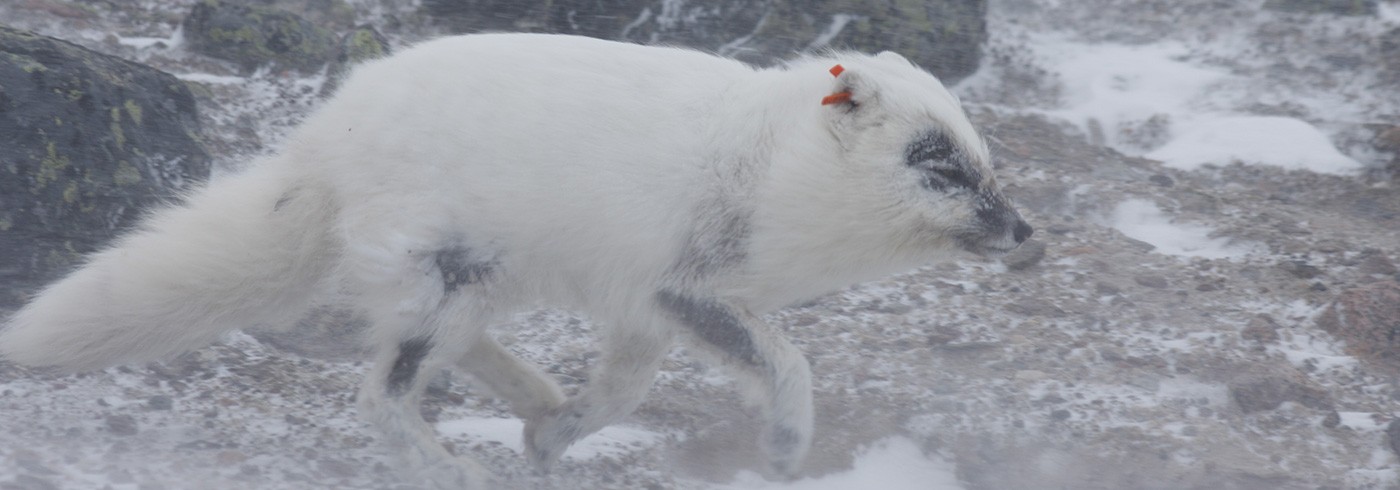Population dynamics of Arctic foxes at Karrak Lake
10 May 2012 - 12 June 2012This study examines various aspects of the population dynamics of arctic foxes and how they vary with fluctuations in lemming abundance – the main food of arctic foxes in most of their range. We are especially interested in the relative importance of survival versus recruitment to the population growth of foxes and how this varies with fluctuations in lemming abundance. However, the relative importance of these variables to changes in population growth and how this varies with fluctuations in food abundance is poorly understood for many animals and ecosystems. Such information is increasingly important today when human alteration and environmental changes are affecting most ecosystems worldwide.
This study is being conducted at Karrak Lake in the Queen Maud Gulf Bird Sanctuary in Nunavut, Canada. Based on capture-mark-recapture of foxes, we are modelling the demographic parameters of foxes in relation to fluctuations in lemming abundance.
Preliminary results indicate that adult survival has been relatively constant among years, whereas recruitment has fluctuated considerably among years, being highly correlated with fluctuations in lemming abundance.









